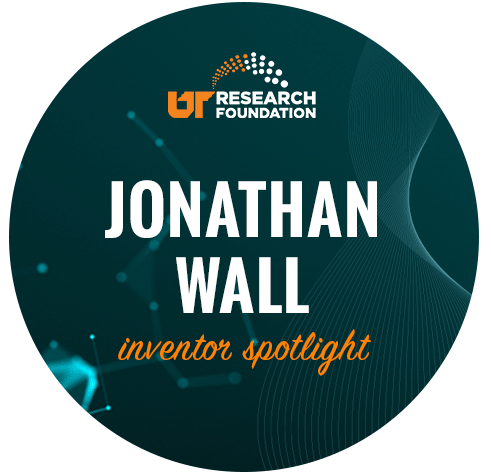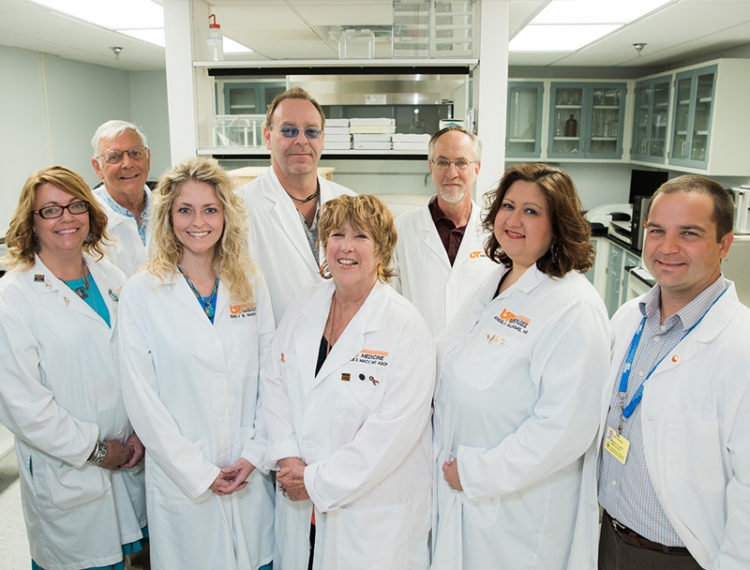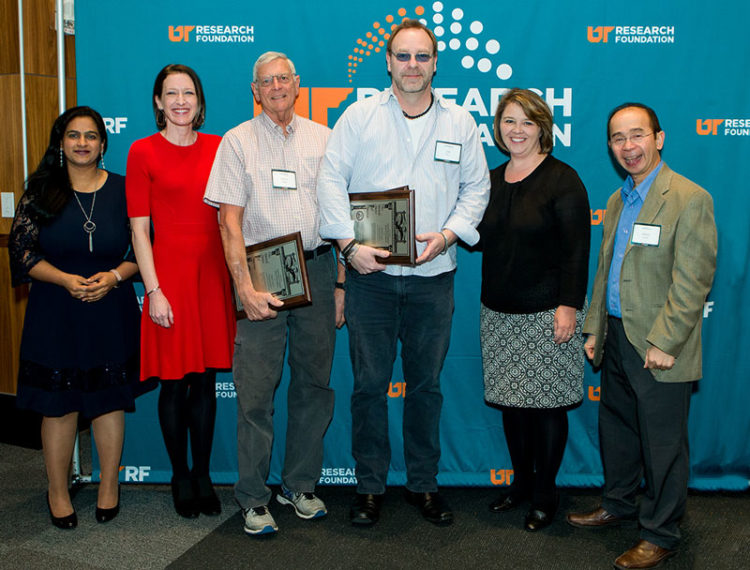 A “team effort” for discovering how to diagnose and treat amyloidosis, a rare protein-folding disorder.
A “team effort” for discovering how to diagnose and treat amyloidosis, a rare protein-folding disorder.
Amyloidosis is a rare disorder that occurs when an abnormal amyloid protein deposits in organs and tissues, interfering with their ability to function normally. There are approximately 30 different types of amyloidosis, and the disease can either be systemic or localized. Until a few years ago, there were no approved therapeutics for the majority of these disorders: now there are only three.
Dr. Jonathan Wall, a professor and Director of Research at the University of Tennessee Graduate School of Medicine, has made it his mission over the last two and a half decades to study this rare disease and develop ways to diagnose and treat it. He serves as the Director of the Preclinical and Diagnostic Molecular Imaging Laboratory and the Amyloidosis and Cancer Theranostics Program (ACTP) and with other members of the Program helped to establish Attralus, a biopharmaceutical startup. Jon and his team have received over $10 million in grants from the National Institutes of Health (NIH) and contract funding for work that focuses on the development and translation of novel diagnostic and therapeutic reagents for amyloidosis.

Diagnosing amyloidosis is difficult due to its rarity, diversity, and mimicry of symptoms from other more common diseases, and delayed diagnosis often results in poor patient outcomes. Jon and his colleagues have discovered a pan-amyloid imaging agent that binds to amyloids the organs of patients with diverse forms of the disease, making the amyloid deposits visible via imaging platforms for potential diagnosis. His team entered into an investigator-initiated Phase 1 “first-in-man” clinical trial for the imaging agent in November 2018. They have also developed therapeutic candidates that are in preclinical development for treatment of ATTR (transthyretin), AL (light chain) and potentially ALECT2 systemic amyloidosis. These therapeutics bind and should remove amyloid fibrils that have been deposited in organs and tissues throughout the body.
Chemists and biological chemists like Jon don’t always have the opportunity to directly impact patients’ lives with their work — he is extremely grateful for the chance to do so.
“The idea that there is so much that can still be done [in amyloid research] and the opportunity to be able to improve patients’ wellbeing and survival is really gratifying,” he explained.
Originally from Wales, Jon completed his undergraduate and graduate degrees from the University of Essex. During his doctoral studies, he connected with Dr. Alan Solomon, a now retired professor from the UT Graduate School of Medicine and former director of the Human Immunology and Cancer Research Program (now ACTP). Dr. Solomon recruited Jon for a postdoctoral position just one month after his graduation in December 1994. After two years, Jon accepted an assistant professor position and has been working on amyloid research at UT ever since.
“It was the only job offer I got after my PhD,” he joked. “But I love what I do and working with the amazing people in the lab.”


Speaking about his team, he emphasized that 99 percent of the credit should go to everyone else.
“I didn’t do any of this on my own, it’s a group effort. I could never have done what I’ve done without them. They’re involved in everything,” he said. “Having people around you who are all pushing in the same direction and understand what’s important … That’s what makes you successful.”
Jon has over 100 publications and 29 issued US and international patents. In Jon’s lab, they focus on patentability and actively file invention disclosures with UTRF. He described the process of working with UTRF as “brilliant.”
“Dr. Wall is an innovative researcher who has spent over two decades working toward breakthroughs in amyloid research,” said UTRF Assistant Technology Manager Kusum Rathore. “UTRF enjoys partnering with dedicated individuals, like Dr. Wall, who believe in the value of their discoveries and want them to directly impact patients’ lives.”